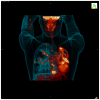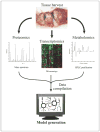The spectrum of latent tuberculosis: rethinking the biology and intervention strategies
- PMID: 19855401
- PMCID: PMC4144869
- DOI: 10.1038/nrmicro2236
The spectrum of latent tuberculosis: rethinking the biology and intervention strategies
Abstract
Immunological tests provide evidence of latent tuberculosis in one third of the global population, which corresponds to more than two billion individuals. Latent tuberculosis is defined by the absence of clinical symptoms but carries a risk of subsequent progression to clinical disease, particularly in the context of co-infection with HIV. In this Review we discuss the biology of latent tuberculosis as part of a broad range of responses that occur following infection with Mycobacterium tuberculosis, which result in the formation of physiologically distinct granulomatous lesions that provide microenvironments with differential ability to support or suppress the persistence of viable bacteria. We then show how this model can be used to develop a rational programme to discover effective drugs for the eradication of M. tuberculosis infection.
Figures





Comment in
-
Spectrum of latent tuberculosis - existing tests cannot resolve the underlying phenotypes.Nat Rev Microbiol. 2010 Mar;8(3):242; author reply 242. doi: 10.1038/nrmicro2236-c1. Epub 2010 Jan 19. Nat Rev Microbiol. 2010. PMID: 20084059 No abstract available.
References
-
- Comstock GW, Baum C, Snider DE., Jr Isoniazid prophylaxis among Alaskan Eskimos: a final report of the bethel isoniazid studies. Am Rev Respir Dis. 1979;119:827–30. - PubMed
-
- Stead WW. Management of health care workers after inadvertent exposure to tuberculosis: a guide for the use of preventive therapy. Ann Intern Med. 1995;122:906–12. - PubMed
-
- Young DB, Gideon HP, Wilkinson RJ. Eliminating latent tuberculosis. Trends in Microbiology. 2009 Epub ahead of print. - PubMed
Publication types
MeSH terms
Substances
Grants and funding
LinkOut - more resources
Full Text Sources
Medical

